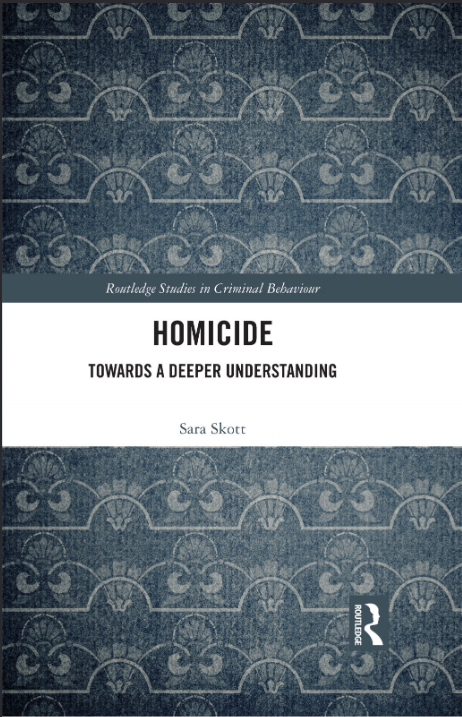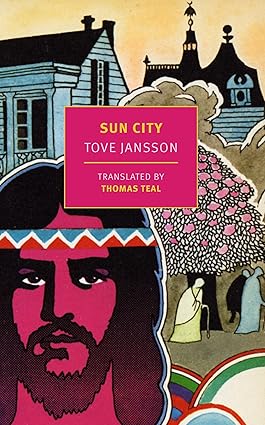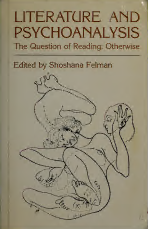However, while few crimes are more fascinating to our society than homi- cide, few crimes also cause us more harm. Homicide has profound social and structural impacts, including increased stress placed on emergency systems, trauma inflicted upon families and strain placed upon communities (Harries, 1989; Harvey, Williams, & Donnelly, 2012). Homicide furthermore has an unparalleled impact on the fear of crime in society (Perkins & Taylor, 1996; Warr, 2000), placing further stress on important social institutions. In addition, homicide also entails great economic costs for the communi- ties in which it occurs (Harvey et al., 2012; Waters, Hyder, Rajkoti, Basu, & Butchart, 2005). Moreover, the study of whether homicide has increased or decreased in a country can tell us something about the general wellbeing of that country. Scholars have studied the changing trends of violent crime for centuries (Quetelet, 1842), using the shifts in violent crime as important social indicators. As such, studying homicide and the change in this crime over time does not only provide a deeper understanding of homicide, but this does also 2 Introduction provide information about our society on a larger scale. Further studies about homicide are therefore very important if we are to gain a full understanding of this crime. As this volume will argue, however, there are important gaps in the know- ledge about homicide. This volume is intended to fill some of these gaps. While many countries have seen a marked decrease of lethal violence over the past decades, perhaps this decline has been most dramatic in Scotland, which transformed from ‘one of the most violent countries in the Western World’ (BBC News, 2005; The Guardian, 2005) to one of the countries with the lowest homicide rates in Europe (Eurostat, 2017). As this volume will demon- strate in subsequent chapters however, much still remains unknown about the nature of this decline. Are there different types of homicide in Scotland, and if so, have all these types of homicide decreased equally? Are there some types of homicide that have remained stable or even increased over time? How does the change in lethal violence correspond to the change in nonlethal violence? In fact, the knowledge about the relationship between homicide and nonlethal violence has been identified as lacking for over 30 years (Harries, 1989). This means that even though we know that both lethal and nonlethal violence have decreased in Scotland over time, as indeed these crimes have decreased in many other Western countries, we still do not know the nature of the relation- ship between these two crimes. Can similar types of homicide and violence be identified across lethal and nonlethal incidents? Does the overall decrease of lethal and nonlethal violence, in fact, obscure hidden countertrends of these crimes? Do types of homicide and violence decrease equally over time or do these crimes display different patterns over time? The answers to these questions may provide us with enough information to determine whether or not homicide and violence may be regarded as similar underlying behaviours only differentiated by outcome, or whether in fact these two crimes are too different to be regarded along a continuum of violence. While the research presented in this volume is mostly based on Scottish data, the findings presented here will have theoretical and practical implications that are of great international relevance and have important impact for the field. Cross-national examination of homicide furthermore has validity issues in regards to differences of crime data, which may lead to problems (Aebi & Linde, 2010), some of which we will discuss in Chapter 2. While international comparisons are still very important, national explorations of homicide are equally important and may furthermore mitigate such validity issues. Scotland is suitable for such an analysis for two main reasons: first, the relationship between homicide and violence has never been examined in Scotland, making this country ideal for such examination. Second, as previ- ously mentioned, Scotland has gained the unenviable reputation as one of the most violent countries in the developed world (BBC News, 2005; The Guardian, 2005). This reputation is, however, no longer true, as Scotland has seen a dramatic decrease of violent crime over the past years.
چکیده فارسی
با این حال، در حالی که تعداد کمی از جنایات برای جامعه ما جذاب تر از قتل هستند، جرایم کمی نیز به ما آسیب بیشتری می رسانند. قتل اثرات اجتماعی و ساختاری عمیقی دارد، از جمله افزایش استرس وارد شده بر سیستم های اضطراری، آسیب های وارده به خانواده ها و فشار وارده بر جوامع (هاری، 1989؛ هاروی، ویلیامز، و دانلی، 2012). علاوه بر این، قتل تأثیر بینظیری بر ترس از جرم در جامعه دارد (پرکینز و تیلور، 1996؛ وار، 2000)، و استرس بیشتری را بر نهادهای مهم اجتماعی وارد میکند. علاوه بر این، قتل همچنین هزینه های اقتصادی زیادی را برای جوامعی که در آن رخ می دهد به همراه دارد (هاروی و همکاران، 2012؛ واترز، هایدر، راجکوتی، باسو، و بوچارت، 2005). علاوه بر این، مطالعه در مورد اینکه آیا قتل در یک کشور افزایش یافته یا کاهش یافته است، می تواند چیزی در مورد رفاه عمومی آن کشور به ما بگوید. محققان روندهای در حال تغییر جنایات خشونت آمیز را برای قرن ها مطالعه کرده اند (کوتلت، 1842)، با استفاده از تغییرات در جرایم خشن به عنوان شاخص های اجتماعی مهم. به این ترتیب، مطالعه قتل و تغییر در این جنایت در طول زمان نه تنها درک عمیقتری از قتل ارائه میکند، بلکه اطلاعاتی را در مورد جامعه ما در مقیاس بزرگتر ارائه میدهد. بنابراین اگر بخواهیم درک کاملی از این جنایت به دست آوریم، مطالعات بیشتر در مورد قتل بسیار مهم است. با این حال، همانطور که در این جلد بحث خواهد شد، شکاف های مهمی در دانش درباره قتل وجود دارد. این جلد برای پر کردن برخی از این شکاف ها در نظر گرفته شده است. در حالی که بسیاری از کشورها طی دهههای گذشته شاهد کاهش قابل توجه خشونت مرگبار بودهاند، شاید این کاهش در اسکاتلند بسیار چشمگیر بوده است، که از «یکی از خشنترین کشورهای جهان غرب» تبدیل شد (بیبیسی نیوز، 2005؛ گاردین، 2005) به یکی از کشورهایی با کمترین میزان قتل در اروپا (Eurostat, 2017). همانطور که این جلد در فصل های بعدی نشان خواهد داد، با این حال، هنوز چیزهای زیادی در مورد ماهیت این کاهش ناشناخته باقی مانده است. آیا انواع مختلفی از قتل در اسکاتلند وجود دارد و اگر چنین است، آیا همه این انواع قتل به یک اندازه کاهش یافته است؟ آیا انواعی از قتل وجود دارد که در طول زمان ثابت مانده یا حتی افزایش یافته است؟ چگونه تغییر در خشونت کشنده با تغییر در خشونت غیرکشنده مطابقت دارد؟ در واقع، دانش در مورد رابطه بین قتل و خشونت غیر کشنده برای بیش از 30 سال شناسایی نشده است (هاری، 1989). این بدان معناست که اگرچه می دانیم که خشونت کشنده و غیرکشنده هر دو در اسکاتلند در طول زمان کاهش یافته است، همانطور که در واقع این جنایات در بسیاری از کشورهای غربی دیگر کاهش یافته است، ما هنوز ماهیت رابطه بین این دو جنایت را نمی دانیم. آیا می توان انواع مشابه قتل و خشونت را در حوادث کشنده و غیرکشنده شناسایی کرد؟ آیا کاهش کلی خشونت کشنده و غیرکشنده، در واقع، روند متضاد پنهان این جنایات را مبهم می کند؟ آیا انواع قتل و خشونت در طول زمان به یک اندازه کاهش می یابد یا این جنایات در طول زمان الگوهای متفاوتی از خود نشان می دهند؟ پاسخ به این سؤالات ممکن است اطلاعات کافی در اختیار ما قرار دهد تا مشخص کنیم که آیا قتل و خشونت ممکن است به عنوان رفتارهای زیربنایی مشابهی در نظر گرفته شوند که فقط بر اساس نتیجه متفاوت هستند یا در واقع این دو جنایت آنقدر متفاوت هستند که نمیتوان آنها را در امتداد تداوم خشونت در نظر گرفت. در حالی که تحقیقات ارائه شده در این جلد بیشتر بر اساس دادههای اسکاتلندی است، یافتههای ارائهشده در اینجا مفاهیم نظری و عملی دارند که ارتباط بینالمللی زیادی دارند و تأثیر مهمی برای این حوزه دارند. بررسی بینملی قتل علاوه بر این، دارای مسائل اعتباری در رابطه با تفاوت دادههای جرم است که ممکن است منجر به مشکلاتی شود (Aebi & Linde, 2010)، که برخی از آنها را در فصل 2 مورد بحث قرار خواهیم داد. در حالی که مقایسههای بینالمللی هنوز بسیار مهم هستند، ملی اکتشافات مربوط به قتل به همان اندازه مهم هستند و علاوه بر این ممکن است چنین مسائل اعتباری را کاهش دهند. اسکاتلند به دو دلیل اصلی برای چنین تحلیلی مناسب است: اول اینکه رابطه بین قتل و خشونت هرگز در اسکاتلند مورد بررسی قرار نگرفته است و این کشور را برای چنین بررسی هایی ایده آل می کند. دوم، همانطور که قبلا ذکر شد، اسکاتلند به عنوان یکی از خشن ترین کشورهای جهان توسعه یافته شهرت غیرقابل رشک به دست آورده است (بی بی سی نیوز، 2005؛ گاردین، 2005). با این حال، این شهرت دیگر درست نیست، زیرا اسکاتلند شاهد کاهش چشمگیر جرایم خشونت آمیز در سال های گذشته بوده است.
ادامه ...
بستن ...
First published 2023
by Routledge
4 Park Square, Milton Park, Abingdon, Oxon OX14 4RN
and by Routledge
605 Third Avenue, New York, NY 10158
Routledge is an imprint of the Taylor & Francis Group, an informa business
© 2023 Sara Skott Söderholm
The right of Sara Skott Söderholm to be identified as author of this work has been asserted in
accordance with sections 77 and 78 of the Copyright, Designs and Patents Act 1988.
All rights reserved. No part of this book may be reprinted or reproduced or utilised
in any form or by any electronic, mechanical, or other means, now known or
hereafter invented, including photocopying and recording, or in any information
storage or retrieval system, without permission in writing from the publishers.
Trademark notice: Product or corporate names may be trademarks or registered trademarks,
and are used only for identification and explanation without intent to infringe.
British Library Cataloguing-in- Publication Data
A catalogue record for this book is available from the British Library
Library of Congress Cataloging- in- Publication Data
Names: Skott, Sara, author.
Title: Homicide : towards a deeper understanding / Sara Skott.
Description: Milton Park, Abingdon, Oxon ; New York, NY : Routledge, 2022. |
Series: Routledge studies in criminal behaviour |
Includes bibliographical references and index.
Identifiers: LCCN 2022004623 (print) | LCCN 2022004624 (ebook) |
ISBN 9780367615086 (hardback) | ISBN 9780367615109 (paperback) |
ISBN 9781003105282 (ebook)
Subjects: LCSH: Homicide.
Classification: LCC HV6515 .S57 2022 (print) |
LCC HV6515 (ebook) | DDC 364.152/3–dc23/eng/20220302
LC record available at https://lccn.loc.gov/2022004623
LC ebook record available at https://lccn.loc.gov/2022004624
ISBN: 978-0- 367- 61508- 6 (hbk)
ISBN: 978-0- 367- 61510- 9 (pbk)
ISBN: 978-1- 003- 10528- 2 (ebk)
DOI: 10.4324/9781003105282
Typeset in Times New Roman
by Newgen Publishing UK
ادامه ...
بستن ...










_663538a5868f3.jpg)